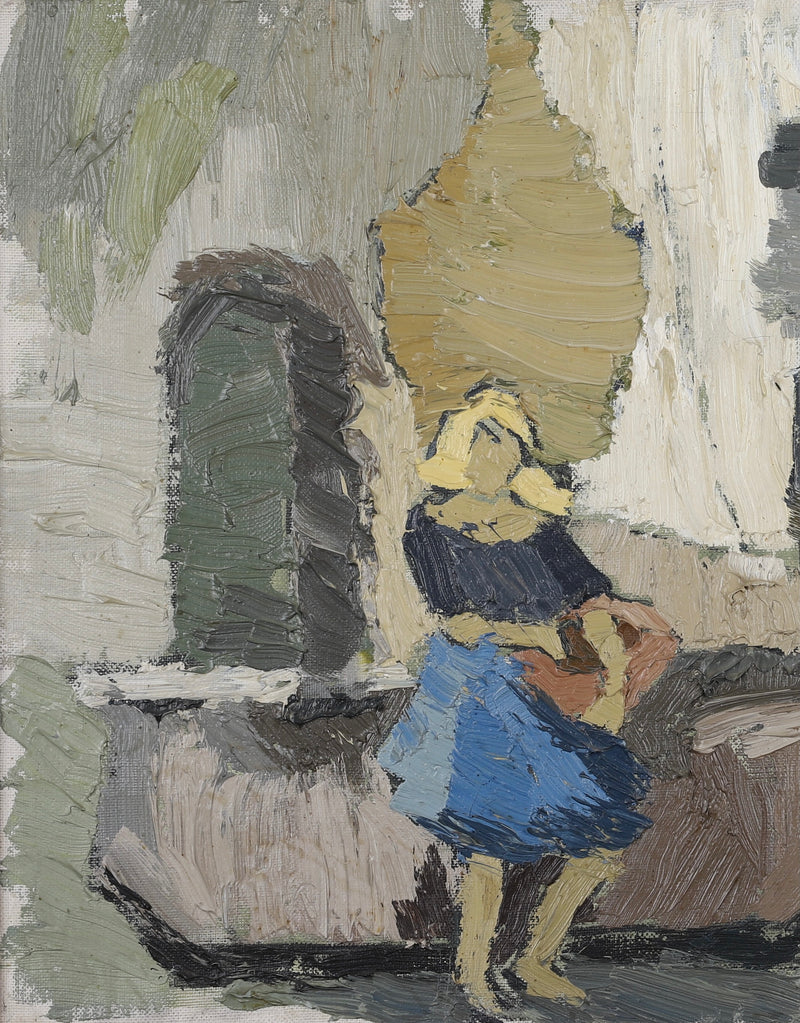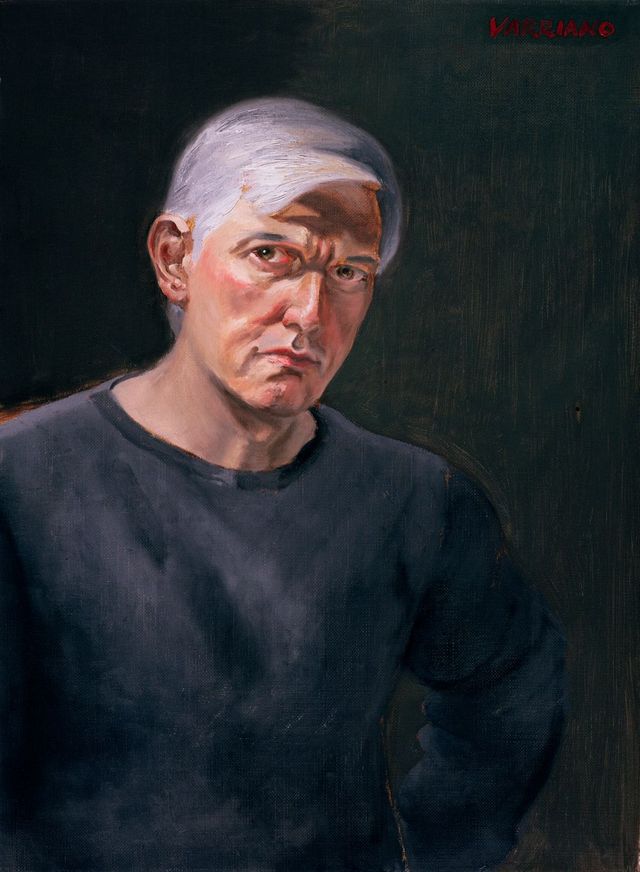Why Figurative Oil Painting Remains a Classic Option for Artists
Why Figurative Oil Painting Remains a Classic Option for Artists
Blog Article
The Duty of Emotion and Expression in Figurative Oil Painting: An In-Depth Analysis of Topic and Structure
The interaction of emotion and expression in figurative oil painting works as an important lens whereby one can take a look at the complex connection in between subject issue and structure. Artists harness different strategies, from shade option to brushstroke characteristics, to grow emotional resonance within their works. This nuanced orchestration not just shapes customer perception but likewise welcomes a deeper inquiry into exactly how these components integrate to reflect the intricacies of human experience. As we explore this abundant surface, one have to take into consideration just how particular study light up the more comprehensive ramifications of these creative selections.
Comprehending Emotion in Art
Emotion in art works as a powerful avenue for expression, enabling artists to communicate intricate sensations via their job. In metaphorical oil paint, this emotional depth is commonly represented through the representation of the human figure, capturing the nuances of human experience. The selection of topic, shade combination, and brushwork all contribute to the psychological vibration of an item.
Artists often bring into play personal experiences, societal issues, or universal styles to evoke feelings in the visitor. A picture might reflect susceptability, while a dynamic figure in motion can represent liberty or turmoil. These psychological threads link the audience to the art work, cultivating a discussion that goes beyond the visual medium.
In addition, the interplay in between light and darkness can intensify psychological strength, leading the visitor's gaze and drawing interest to specific aspects within the structure. Making use of appearance in oil paint better includes layers of complexity, welcoming a responsive reaction that enhances the psychological experience. Overall, recognizing feeling in art is crucial for valuing the nuances that identify metaphorical oil painting, as it transforms plain representation into a profound expedition of the human condition.
Secret Aspects of Structure
In the realm of metaphorical oil paint, the make-up acts as the underlying structure that organizes aesthetic elements and improves the emotional story. Crucial parts of structure consist of balance, contrast, prime focus, and rhythm, each adding to the total influence of the artwork.
Balance refers to the distribution of visual weight within the painting, which can be attained through symmetrical or asymmetrical setups. A well-balanced structure provides security, allowing the visitor to engage with the piece harmoniously - figurative oil painting. Comparison, on the other hand, entails juxtaposing different elements, such as dark and light or warm and trendy colors, to direct the customer's eye and stimulate emotional responses
The focal factor is important, as it directs focus to the most significant part of the painting, commonly highlighting the emotional core of the story. By masterfully incorporating these vital elements, musicians can craft engaging and psychologically powerful metaphorical oil paints that astound and involve their audience.
Subject and Its Effect
Topic plays a crucial function in metaphorical oil paint, as it not just offers as the foundation for the narrative but likewise shapes the visitor's interpretation and psychological engagement with the art work. The option of subject-- be it a singular number, a group dynamic, or a thematic representation-- directly influences the psychological ambience conveyed to the audience.

For instance, pictures commonly evoke individual links, exposing the complexities of human expression and personality, while scenes illustrating communal activities can develop a sense of belonging or fond Your Domain Name memories. The historic and cultural context of the subject matter enriches the viewer's understanding, motivating much deeper representations on societal standards, values, and the human problem.
Various topics likewise create differing degrees of engagement; a significant problem portrayed via figures in stress may evoke feelings of stress and anxiety or compassion, while tranquil landscapes can invoke peace and contemplation. Eventually, the influence of topic in figurative website link oil paint is extensive, as it functions as an avenue for psychological vibration, guiding the audience's action and interpretation, and cultivating a connection between the onlooker and the art work. This interplay is necessary for the effective interaction of the musician's intent.
Techniques for Evoking Feelings
The efficiency of metaphorical oil paint in conveying feelings is dramatically affected by the methods used by the musician. One of the most vital techniques is the use of shade concept, where the critical option of colors can stimulate certain psychological responses. Warm shades, such as oranges and reds, commonly generate sensations of interest or aggression, while cooler tones like blues and environment-friendlies tend to stimulate peace or unhappiness.
Another crucial strategy is the adjustment of light and darkness, recognized as chiaroscuro. This method enhances the three-dimensionality of figures, producing dramatic contrasts that can escalate psychological deepness. The positioning of light can lead visitors' feelings, highlighting certain elements of the structure.
Brushwork additionally plays an essential duty; loose, meaningful strokes can convey recommended you read energy and spontaneity, whereas smoother strategies may recommend tranquility or accuracy. The setup of topics within the composition can affect psychological influence. Close proximity can suggest intimacy, while range may suggest isolation.
Inevitably, the combination of these strategies makes it possible for artists to craft stories that reverberate with the customer, transforming a mere visual experience right into an evocative emotional trip. - figurative oil painting

Study of Significant Works
Taking a look at remarkable jobs of metaphorical oil painting exposes how numerous methods are employed to stimulate effective emotions. One excellent case is Edvard Munch's "The Scream," where the distorted number and swirling history communicate existential dread. Munch's use color-- vibrant oranges and deep blues-- heightens the emotional impact, showcasing just how scheme options can form customer experience.
An additional considerable work is Pablo Picasso's "Les Demoiselles d'Avignon." Below, fragmented types and strong brushstrokes reflect a turbulent emotional landscape, challenging typical representations of the women number. Picasso's innovative composition not only catches the audience's attention yet also invites reflection on styles of identity and sexuality.
In Addition, Frida Kahlo's "Both Fridas" supplies a poignant exploration of duality and self-identity. The different figures, connected by a common heart, exhibit Kahlo's psychological depth and personal narrative. figurative oil painting. Her meticulous interest to detail and symbolic elements offer to involve audiences on a visceral level
These study highlight the extensive connection between feeling and make-up in figurative oil painting, exposing exactly how musicians harness method to communicate complicated sensations and stories that resonate across time and society.

Conclusion
In conclusion, the interaction of feeling and expression in figurative oil painting substantially improves the audience's experience and analysis of the art work. Through a careful choice of subject issue and compositional methods, musicians communicate extensive stories that reverberate on both personal and universal levels. The application of color theory, brushwork, and chiaroscuro additional magnifies emotional deepness, transforming each canvas right into an effective reflection of the intricacies of the human experience.
In figurative oil painting, this emotional depth is frequently represented with the representation of the human figure, recording the nuances of human experience.Furthermore, the interplay in between light and darkness can magnify psychological intensity, directing the visitor's stare and attracting focus to certain elements within the composition. The usage of appearance in oil paint further adds layers of complexity, welcoming a responsive action that improves the psychological experience.The focal point is crucial, as it guides focus to the most substantial component of the paint, typically highlighting the psychological core of the narrative. Eventually, the influence of subject issue in figurative oil paint is extensive, as it serves as a channel for psychological resonance, directing the viewer's reaction and interpretation, and fostering a connection in between the onlooker and the art work.
Report this page